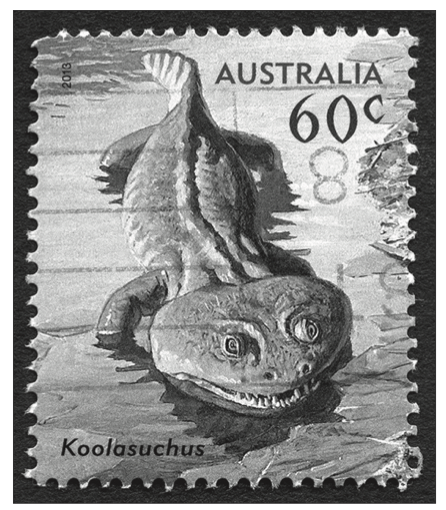Absolute dating techniques provide crucial information about the age of fossils and rocks, but different methods are suitable for different time periods.
Describe two absolute dating methods used by scientists, each appropriate for a different time scale. (4 marks)
--- 8 WORK AREA LINES (style=lined) ---
Carbon-14 dating:
→ Carbon-14 dating is an absolute dating method used for relatively recent organic materials. It’s based on the decay of radioactive carbon-14 to nitrogen-14.
→ Carbon-14 has a half-life of 5730 years and measuring the ratio of carbon-14 to stable carbon-12, scientists can determine when the organism died.
→ Carbon-14 dating is most effective for materials up to about 50,000 years old, making it useful for dating recent fossils.
Potassium-40 dating:
→ Potassium-40 dating is an absolute dating technique that can be used for much older materials.
→ It’s based on the decay of radioactive potassium-40 to argon-40. This method is effective for dating rocks and minerals containing potassium, typically those of igneous or metamorphic origin.
→ Potassium-40 has a half-life of about 1.3 billion years, making this method suitable for dating ancient fossils and rock layers from 50,000 to billions of years old.
Carbon-14 dating:
→ Carbon-14 dating is an absolute dating method used for relatively recent organic materials. It’s based on the decay of radioactive carbon-14 to nitrogen-14.
→ Carbon-14 has a half-life of 5730 years and measuring the ratio of carbon-14 to stable carbon-12, scientists can determine when the organism died.
→ Carbon-14 dating is most effective for materials up to about 50,000 years old, making it useful for dating recent fossils.
Potassium-40 dating:
→ Potassium-40 dating is an absolute dating technique that can be used for much older materials.
→ It’s based on the decay of radioactive potassium-40 to argon-40. This method is effective for dating rocks and minerals containing potassium, typically those of igneous or metamorphic origin.
→ Potassium-40 has a half-life of about 1.3 billion years, making this method suitable for dating ancient fossils and rock layers from 50,000 to billions of years old.
